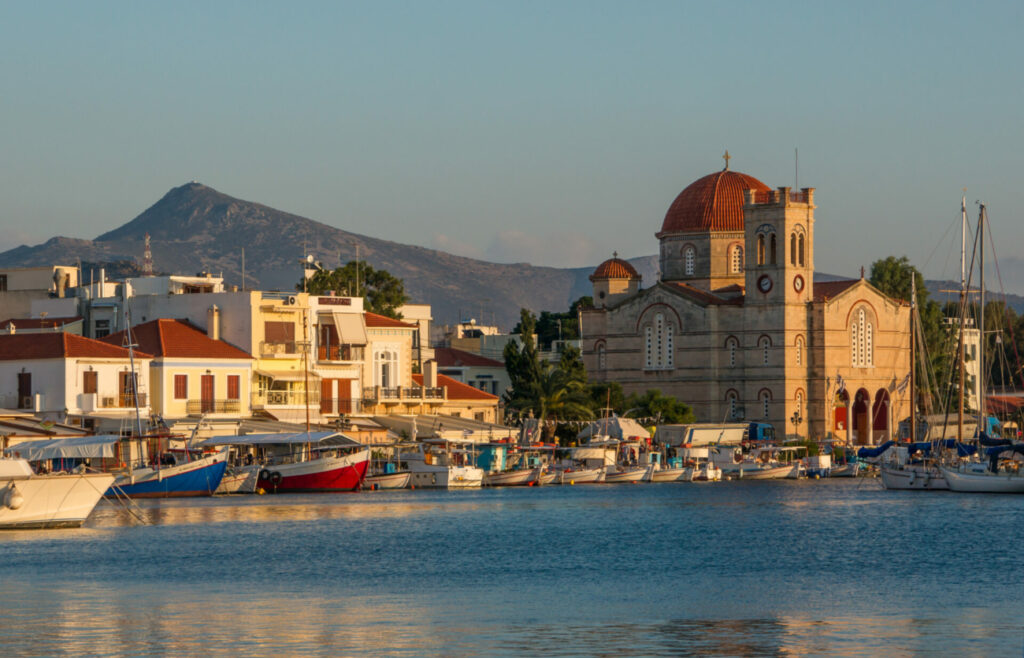Greece is an ideal country for sailing. It is made up of 7 scattered island groups – namely Crete, the Cyclades, Dodecanese, Ionian, Sporades, Saronic and Eastern Aegean. Each region has its own characteristics and wind patterns. For sailors, this means you can find sailing for all experience levels, from beginners to experts. Read on to figure out what wind patterns make each area unique.

Ionian Sea
The Ionian Sea is located at Greece’s western border. The summer wind in the area is known as the “Maistro”. It is a tame Northwest wind, and it tends to give a reliable breeze from May to September. Some say that you can “set your watch to the wind.” If it’s before 11:00am, there is likely not a wisp of wind. Then a breeze starts to kick up in the early afternoon, making ideal conditions for a relaxed sail. The wind is said to “go to sleep” at dusk.
In the southernmost area of the Ionian islands, you almost always get flat seas because Zakynthos and Kefallonia shelter you from the wind.
Aegean Sea
The Aegean is known for its strong winds, also called the “Meltemi.” The Meltemi are a katabatic wind that comes down from northern Greece and shoots through the Cycladic islands. The Meltemi are dangerous for inexperienced sailors because they peak at 15-20 knots. As a general rule, they start in the early afternoon and die down in the evening, but can also blow for multiple days nonstop.

Cyclades
The Cyclades, which include Santorini, Mykonos, and Paros, are affected by the Meltemi, especially when the land heats up in the summertime. The Meltemi winds fade away in the Autumn, making for good late season voyages.
Sporades
This remote area of the north Mediterranean, which includes the islands of Skiathos, Skopelos, and Alonnisos, can also experience a Meltemi breeze in the summer. However, the Sporades are more lush with vegetation and less windy than the Cyclades in general.
Saronic Gulf
The Saronic Gulf, which includes the islands of Poros and Aegina, is more sheltered from the winds of the Aegean, and there is usually not much wind here apart from the Southeast “scirocco winds” in the afternoon. In July and August, a Meltemi blows, but it is weaker than in the Cyclades.

Winds of the Ancient Greeks
Zephyrus
Zephyrus was once known as the god of the West and brings light spring and summer winds. It is not dangerous to sailors, and any gentle gust today can be referred to as “a zephyr.” The god of the West Zephyrus supposedly gave the goddess Chloris dominion over flowers. This is why Zephyr winds are said to help vegetation.
Eurus
Eurus is the name for the East wind from Greek mythology. It was not necessarily tied to a particular season, but was instead tied to mischief or unfavorable events. In Greece, the East wind is usually not present on its own, but accompanies a North or South wind.
Notos
Notos (Notus) is the name of the south winds, and they are dangerous in Greece. This is beacuse most harbours in Greece are not set up favorably for these types of winds. Notos winds blow mainly in the winter. One such Notos wind is called the Sirocco, and it blows between April and October. It collects dust from North Africa and reduces visibility in southern areas of Greece. The humid airs coming from the south create conditions for thunderstorms.
Boreas
Boreas, the North wind, is the least common in Greece. The boreas blows only in the winter and brings cold air down from Siberia.

Where Should I Sail in Greece?
Every island grouping of Greece has unique characteristics for sailors. The Ionian Sea and Saronic GuIf islands are known for their calm seas, and the Cycladic islands are known for their extreme Meltemi winds. No matter which area you choose to sail in, you are bound to see a new perspective of Greece, which offers many remote beaches and sights that are not available on land.
A number of charter companies in Greece let you rent your own boat or charter a boat with a local captain. As a rule of thumb, It’s best when planning your voyage not to focus on specific islands, and to always have a backup plan in case winds increase. These companies can help you set an itinerary that prioritizes safety, variety, and relaxation.








